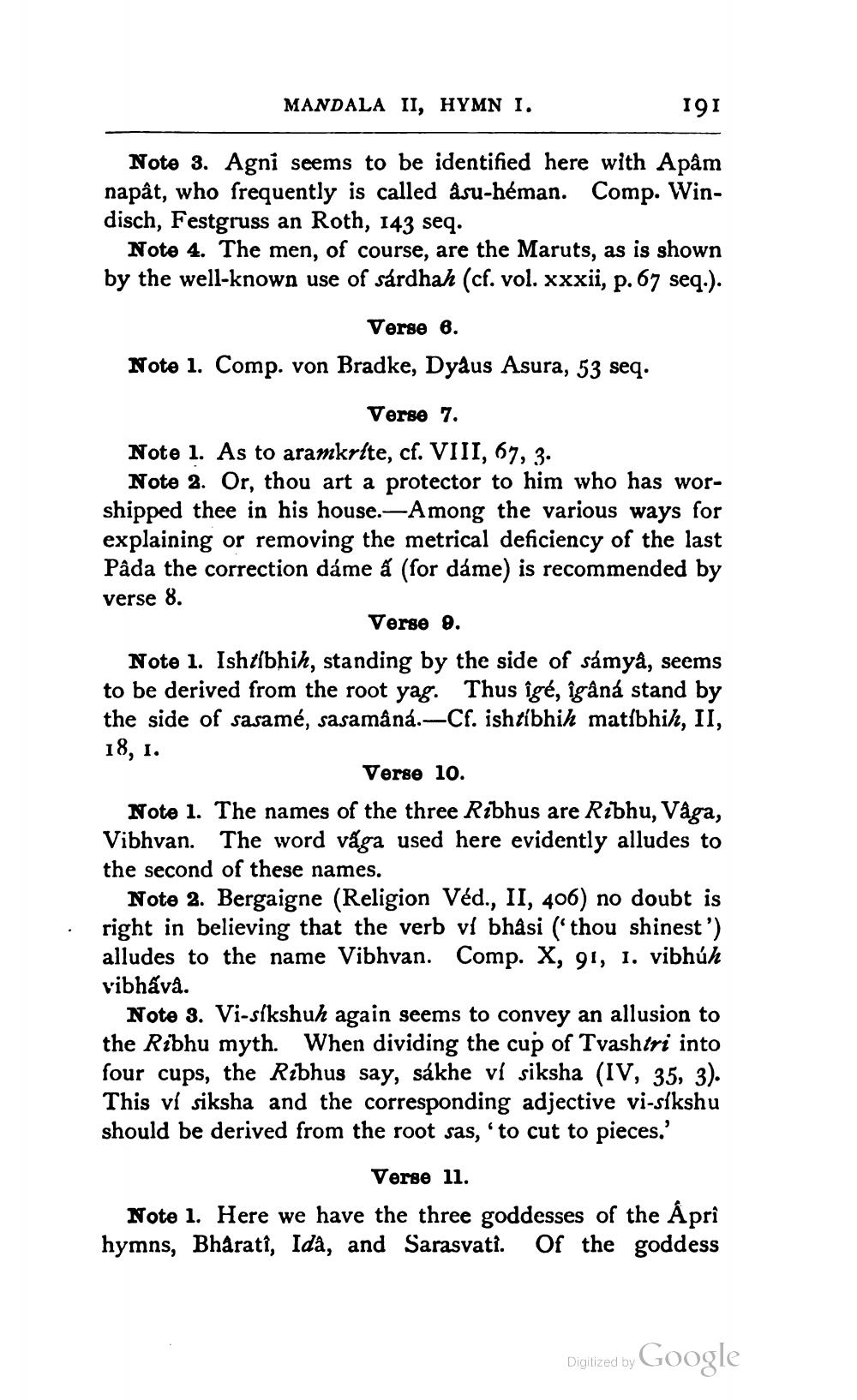________________
MANDALA II, HYMN 1.
191
Note 3. Agni seems to be identified here with Apâm napât, who frequently is called asu-héman. Comp. Windisch, Festgruss an Roth, 143 seq.
Note 4. The men, of course, are the Maruts, as is shown by the well-known use of sárdhah (cf. vol. xxxii, p. 67 seq.).
Verse 6. Note 1. Comp. von Bradke, Dyaus Asura, 53 seq.
Verse 7. Note 1. As to aramkrite, cf. VIII, 67, 3.
Note 2. Or, thou art a protector to him who has worshipped thee in his house.—Among the various ways for explaining or removing the metrical deficiency of the last Pâda the correction dáme à (for dáme) is recommended by verse 8.
Verse o. Note 1. Ishtíbhih, standing by the side of sámyå, seems to be derived from the root yag. Thus igé, îgâná stand by the side of sasamé, sasamâna.-Cf. ishríbhih matíbhik, II, 18, 1.
Verse 10. Note 1. The names of the three Ribhus are Ribhu, Våga, Vibhvan. The word väga used here evidently alludes to the second of these names.
Note 2. Bergaigne (Religion Véd., II, 406) no doubt is right in believing that the verb vi bhâsi (thou shinest') alludes to the name Vibhvan. Comp. X, 91, 1. vibhúh vibhava.
Note 3. Vi-síkshuh again seems to convey an allusion to the Ribhu myth. When dividing the cup of Tvashtri into four cups, the Ribhus say, sákhe vi siksha (IV, 35, 3). This vi siksha and the corresponding adjective vi-síkshu should be derived from the root sas, to cut to pieces.'
Verse 11.
Note 1. Here we have the three goddesses of the Aprî hymns, Bharatî, Idà, and Sarasvati. Of the goddess
Digitized by Google




